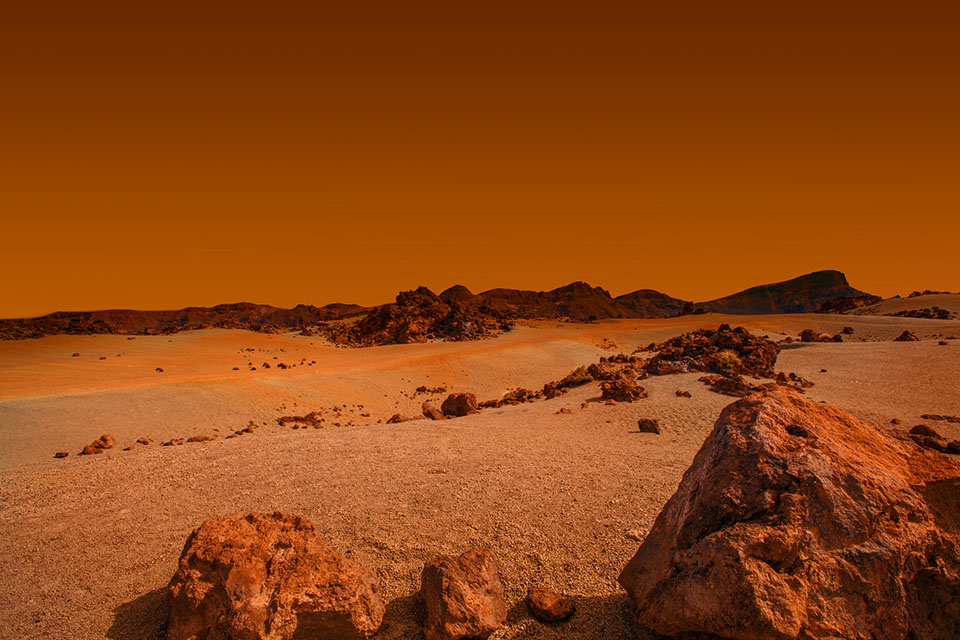Students Study Mars Soil for Signs of Ancient Life, in ARCS/NASA Project

Photo credit: nemchinowa, iStock.
Images by the wandering Mars rover, transmitted back some 39 million miles to Earth, show a barren landscape dotted with rocks and other natural formations. High-definition pictures of those surface elements are more revealing, exposing different patterns and textures within those structures.

Rimma Hämäläinen leads a small group of CSUN students in a mission to help NASA analyze the molecular makeup of Mars.
This summer, Rimma Hämäläinen, who is pursuing a master’s of science in mathematics, led a small group of CSUN students whose mission is to help NASA create a means for quickly analyzing the molecular makeup of the geography of the red planet. The student team, who worked with NASA as part of CSUN’s NASA-funded Autonomy Research Center for STEAHM (ARCS), examined super close-up pictures of soil and rock textures – they could see features as small as a single grain of sand – and performed statistical analyses to potentially build an interactive visualization tool that makes it easier to see patterns and mineral clusters within data.
Her work has the potential to change the way we understand our universe — understanding the geological composition of Mars can help identify the potential for life and even look for signs of ancient life.
Hämäläinen said she appreciates the chance to diversify her skill set, working with both undergraduate and graduate students and veteran scientists at NASA’s Jet Propulsion Laboratory research.
“I like exploring different areas of study,” Hämäläinen said. “It also has taught me a lot, especially from the perspective of the research being very multidisciplinary, which I have come to appreciate.”
ARCS launched in 2020 when NASA awarded CSUN a three-year, $3 million grant to create a center serving as a research base for faculty and students from across the university’s colleges as they study various aspects of increasingly autonomous (IA) systems — which range from autopilot to advanced systems that are able to adapt and evolve. STEAHM stands for science, technology and engineering, entrepreneurship, arts, humanities and mathematics on campus.
To Hämäläinen, who’s been involved with ARCS since its inception, seeing and helping undergraduate students gain experience in technical fields has proven just as enjoyable.
“I don’t think enough undergraduates are given these sorts of opportunities,” she said. “This is a way to give valuable experience to those who need it.”


 experience
experience